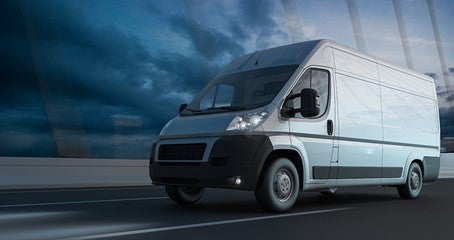The EURO VI norms: what you should know

EURO VI is the latest tier in the european emission standards for commercial vehicles. These set the acceptable emission limits for new vehicles sold in Europe. Read on to discover what the EURO VI norms entail.
The Euro standards were introduced in 1991. Euro VI came into force in 2009, and was amended in 2011 and 2014. As European legislation has developed, the auto industry has introduced several innovations to meet the progressively tighter emission standards. The industry was fully involved in discussions on Euro 6 and VI rules for cars and commercial vehicles.
Did you know? Arabic numerals (as in ‘Euro 6’) refer to passenger cars whereas Roman numerals (as in ‘Euro VI’) refer to commercial vehicles.
Wolf Lubricants
Notable technologies developed by the industry include:
- Variable valve timing
- Direct fuel injection
- Improved and highly sophisticated engine management systems
The major role of after-treatment systems
A breakthrough technology are exhaust after-treatment systems, in which the engine and the exhaust after-treatment are designed as one system. Manufacturers are, of course, taking into account the need for consistent and high-quality fuels in all EU markets (and beyond the EU borders for commercial traffic).
In order to meet the tough Euro VI standards, after-treatment systems rely heavily on particulate filters. All new diesel cars and all new trucks are now fitted with these.
Many commercial vehicles also use Selective Catalytic Reduction (SCR) in combination with a urea-based additive (trademark AdBlue®) to help reduce NOx (NO and NO2) emissions.
Notable differences between Euro 6 and Euro VI
Commercial vehicles, because of their higher fuel consumption, are allowed higher emissions than light-duty vehicles. For example, where Euro 6 sets a maximum of 0.50 grammes CO and 0.08 grammes of NOx emitted per km, Euro VI vehicles are allowed 1.5 grammes of CO and 0.4 grammes of NOx. Regarding NOx, this is an 80% decrease in NOx emitted when compared to Euro V nevertheless.
There’s another major difference from Euro 6. For the first time, the Euro VI standards include a particle number limit. The limit is 8 x 1011 particles per kilowatt-hour under the WHSC (World Harmonized Stationary Cycle) test, and 6 x 1011 under the WHTC (World Harmonized Transient Cycle) test. Note that The vehicle certification test cycle to meet the Euro VI standards is different from that used for Euro V, so the comparisons are only approximate.
Let’s make all fleets comply with Euro VI
Europe should make the most of the solutions brought to market by EURO VI by encouraging fleet renewal. This would not only greatly and more quickly improve air quality, but would also help stimulate the economy.
Summary
- Notable technologies developed to meet the Euro standards include: variable valve timing, direct fuel injection and improved and highly sophisticated engine management systems.
- A breakthrough technology are exhaust after-treatment systems.
- Europe should make the most of the solutions brought to market by EURO VI by encouraging fleet renewal.